If you’ve ever stood in line, picked up a tray, and selected dishes from a row of options, you’ve experienced a cafeteria. But what is cafeteria exactly? Beyond being a place for quick meals, cafeterias play a key role in education, business, and public life. They are known for their efficiency, affordability, and convenience, ideal for people who value both time and comfort. Let’s explore the full cafeteria definition, its origins, characteristics, and 15 popular types of cafeterias found worldwide.

1. What is the definition of a cafeteria? Origin and history of the cafeteria
1.1. What is cafeteria?
A cafeteria is a type of food service location or restaurant characterized by a self-service format. Diners typically pick up a tray, move along a counter, select their desired food items from a display, and then pay at a cash register before finding a seat.
This system is built for speed and efficiency. It allows a high volume of customers to be served quickly, making it ideal for places with time constraints, such as schools, offices, and hospitals. The focus is on providing ready-made, functional meals rather than a full, traditional dining experience.
The key features are:
- Self-Service: Minimal interaction with serving staff.
- Ready-to-Eat Food: Dishes are often prepared in advance and kept warm.
- Tray-Line System: A physical setup designed for customer flow.
- Fixed-Price or A La Carte: Payment is made upfront or at the end of the line.
The simple answer to what is cafeteria is this: it’s an efficient, quick, and convenient dining establishment where the customer does most of the serving.
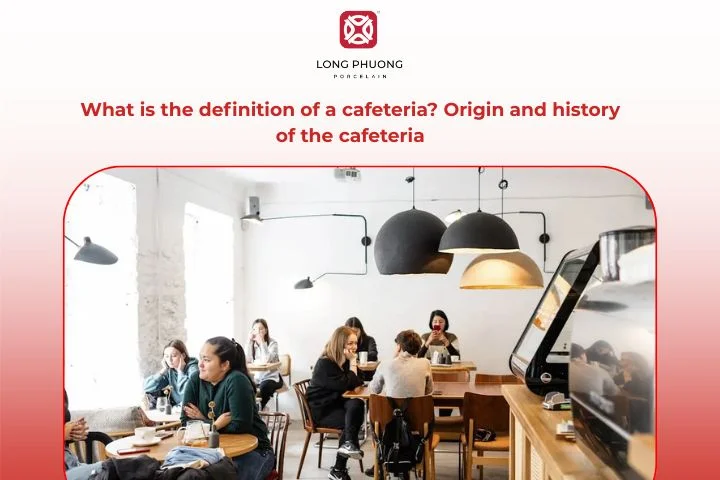
1.2. Origin and history of the cafeteria
The term cafeteria comes from the Spanish word cafetería, originally meaning “coffee shop.” The modern concept first appeared in the United States during the late 19th century, inspired by European self-service dining halls.
The first recognized cafeteria opened in 1893 at the Chicago World’s Fair, where large crowds needed quick yet organized meal service. From there, the model spread rapidly to schools, companies, and public buildings, becoming a global standard for communal dining. Learning about this history helps us understand what is cafeteria today.
2. 6 unique characteristics of the Cafeteria model?
Understanding the core functions is crucial when analyzing what is cafeteria. The following characteristics define this unique food service model:
2.1. High-speed service for large volumes
Cafeterias are designed to serve hundreds or even thousands of people daily. The setup ensures smooth traffic flow, allowing quick turnover during peak hours. This is one of the key answers to what is cafeteria efficiency.
2.2. Simple menu
Cafeteria menus are typically straightforward and designed for mass production. They focus on easy-to-prepare dishes. This simplicity is part of what is cafeteria practicality, ensuring quick meals without compromising taste.

2.3. Light and convenient eating utensils
Cafeterias often use porcelain, melamine, or stainless steel tableware for durability and hygiene. Reliable suppliers like Long Phuong Porcelain provide lightweight yet elegant plates, bowls, and trays that can withstand high daily usage.
2.4. Limited guest interaction with staff
Since most cafeterias use self-service or semi-self-service models, customers interact minimally with staff, reducing labor costs and service time.
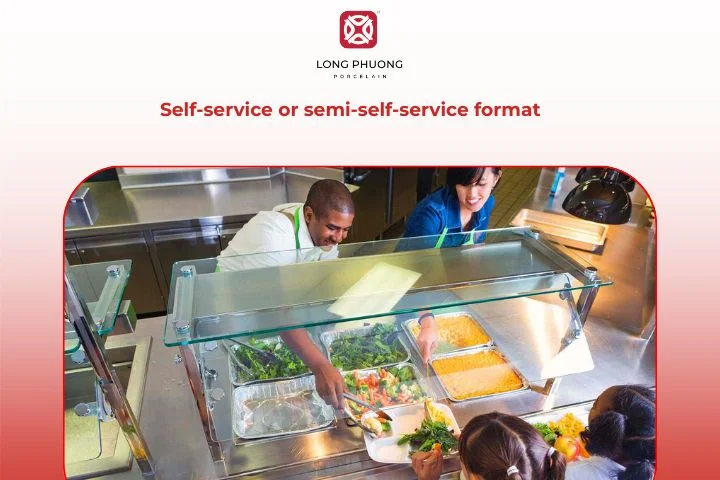
2.5. Self-service or semi-self-service format
The self-service line is the definitive part of the cafeteria definition. Customers select their own food and often carry their own trays to the table. This is essential to knowing what is cafeteria.
2.6. Comfort, freedom and convenience
While not luxury dining, a cafeteria offers freedom. Diners can choose exactly what they want and mix-and-match items. This flexibility adds another layer to what is cafeteria experience.
3. 15 types of cafeterias you should know
The basic cafeteria definition is applied across many settings, each with its own unique operational twist. To fully grasp what is cafeteria, we must look at its variations.
3.1. School cafeteria
The classic image. Focuses on balanced, often subsidized meals for students (K-12). They operate within strict time limits and budget constraints.
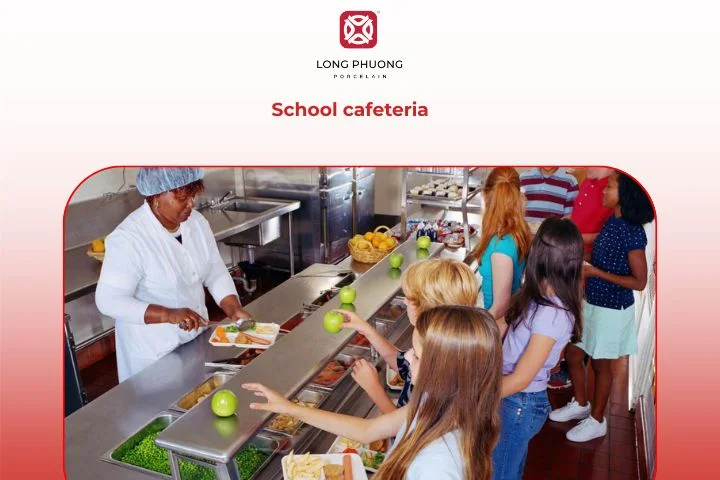
3.2. College or university cafeteria
Offers budget-friendly meals for students, featuring multiple cuisine counters. It defines what is cafeteria life in education.

3.3. Office or corporate cafeteria
Located in business buildings, corporate cafeterias serve quick, affordable meals for employees during work hours, promoting convenience and productivity.

3.4. Hospital cafeteria
Unlike commercial cafeterias, hospital ones serve three different audiences: patients, staff, and visitors. Patients receive meals prescribed by nutritionists, while staff and guests enjoy standard menu items like soups, salads, or sandwiches.
Cleanliness and safety are top priorities, making porcelain dinnerware an ideal choice due to its non-toxic and easy-to-sanitize properties.
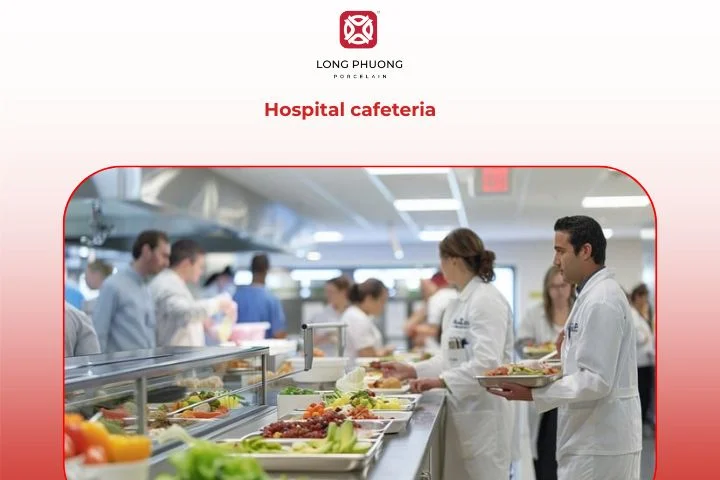
3.5. Factory or industrial cafeteria
In large manufacturing plants or construction sites, workers rely on factory cafeterias for quick, energy-packed meals.
Efficiency is key, menus often feature rice, stir-fried dishes, or simple stews that can be served fast. Seating areas are practical rather than decorative, allowing employees to dine quickly and return to work.
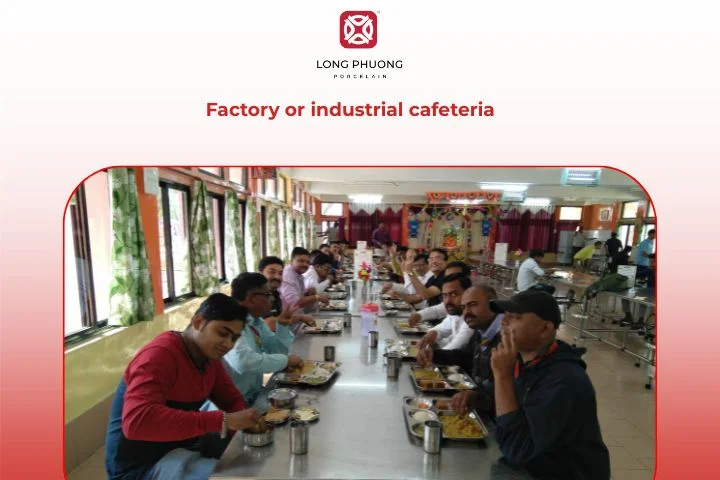
3.6. Military cafeteria (mess hall)
Also known as a mess hall, the military cafeteria is built around discipline and uniformity. It serves large numbers of soldiers simultaneously, offering nutritious meals that meet strict dietary standards.
Meal times are scheduled, and menus often rotate between protein-rich and carbohydrate-heavy dishes to support physical training.

3.7. Hotel cafeteria
While the concept remains self-service, presentation quality is elevated. Food is often displayed in warmers, and beverages are arranged attractively to create a semi-luxury experience.
Hotel cafeterias bridge the gap between convenience and class, offering speed and style at the same time.

3.8. Airport cafeteria
Located in high-traffic terminals, airport cafeterias are designed for travelers on tight schedules. Their menus feature quick, ready-to-eat options like sandwiches, rice bowls, or coffee.
Comfort and cleanliness are essential, as passengers from around the world pass through. These cafeterias often operate 24/7, serving everyone from early-morning fliers to late-night arrivals.
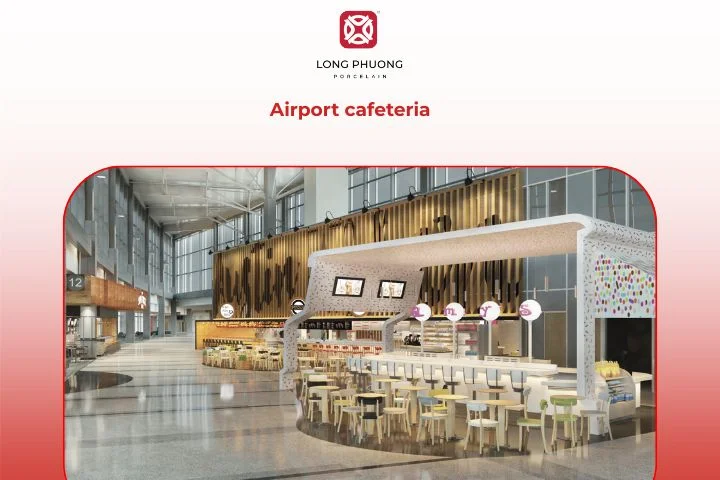
3.9. Shopping mall cafeteria
The shopping mall cafeteria, often resembling a food court, is a dynamic, multi-vendor dining space. It gathers various stalls, from fast food to regional cuisine, under one roof.
The diversity attracts families, tourists, and young people, turning the cafeteria into a social hotspot.

3.10. Cruise ship cafeteria
Life at sea is incomplete without a cruise ship cafeteria. These buffets provide guests with around-the-clock dining options from breakfast spreads to midnight snacks.
Meals are designed to satisfy a wide range of tastes, including international cuisines and dietary-specific dishes.
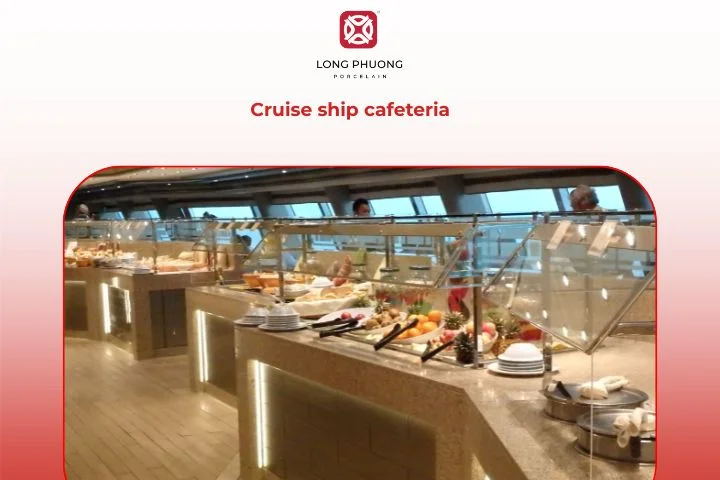
3.11. Museum or public facility cafeteria
Museums, libraries, and public buildings often include cafeterias to enhance visitor experience. After hours of walking and exploring, guests can relax with coffee, light meals, or desserts.
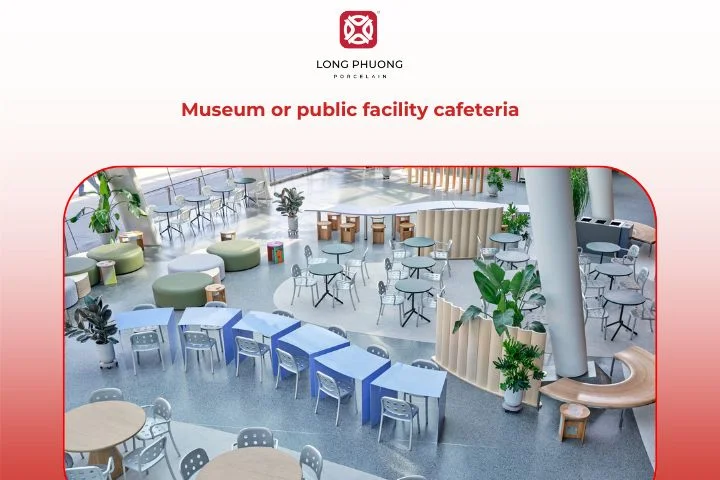
3.12. Government or institutional cafeteria
Government cafeterias serve employees and officials in ministries, courts, or public offices. Menus are typically simple yet nutritious, offering rice plates, soups, and seasonal vegetables.
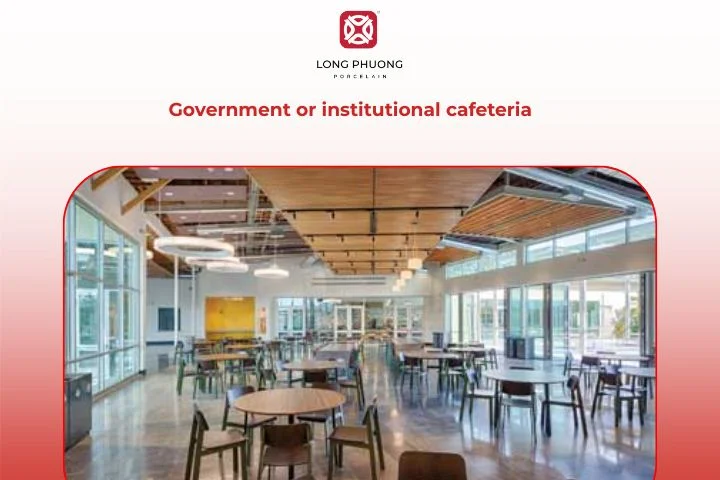
3.13. Buffet-style cafeteria
The ultimate form of self-service, where the diner pays a fixed price for unlimited portions. This is a common form of what is cafeteria.

3.14. Eco-friendly or green cafeteria
A modern type that focuses on sustainable practices, local sourcing, and using durable, reusable tableware.
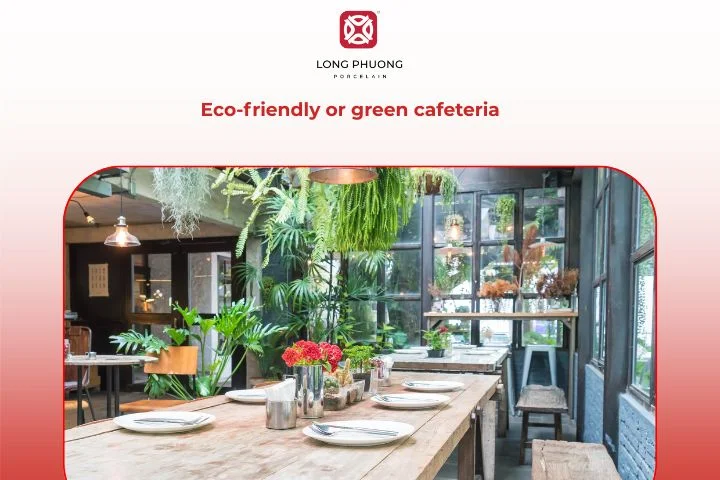
3.15. Virtual or automated cafeteria
Uses technology (kiosks, apps, smart fridges) for ordering and payment. Food is often prepared by robots or dispensed from smart vending machines, minimizing human staff.

See more: how to estimate the cost of starting your own restaurant
4. Comparing cafeteria, cafe, and pantry: Key differences you should know
While they all serve food or drink, the difference between a cafeteria, a cafe, and a pantry is significant in terms of service model, purpose, and atmosphere. Knowing the distinction helps fully grasp what is cafeteria.
| Feature | Cafeteria | Café | Pantry |
| Main Concept | Self-service or semi-self-service dining | Casual space for coffee and light meals | Small area for storing or preparing quick snacks |
| Service Style | Customers serve themselves | Staff-served or table service | Self-prepared |
| Typical Location | Schools, offices, hospitals | Streets, malls, hotels | Workplaces or homes |
| Menu Type | Full meals and drinks | Coffee, desserts, snacks | Beverages, light food |
| Ambience | Functional and communal | Relaxed and social | Private and practical |
5. Business experience when running a cafeteria business model
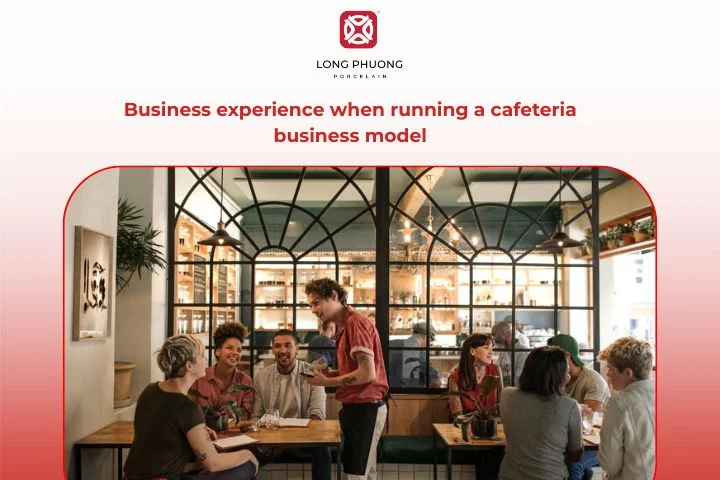
Running a cafeteria isn’t just about food, it’s about logistics and understanding what is cafeteria management.
5.1. Understanding the cafeteria business model
Success lies in volume and efficiency. You must accurately forecast demand to minimize food waste. The self-service model naturally supports low labor costs. To succeed, you must master the question: what is cafeteria logistics?
5.2. Choosing the right concept and location
Define your concept first: institutional, corporate, or eco-friendly cafeteria. Then, select a location with easy access, reliable electricity, and food supply chains.
5.3. Designing an efficient cafeteria layout
The flow should allow customers to move smoothly from food selection to payment and seating. Durable porcelain tableware from Long Phuong Porcelain helps maintain hygiene while elevating presentation quality.
5.4. Menu planning and food management
Menus should cycle to prevent boredom but remain simple enough for mass preparation. Use technology for inventory management to track popular dishes and reduce spoilage. When planning, you must always remember what is cafeteria’s core function: fast service.
6. FAQs
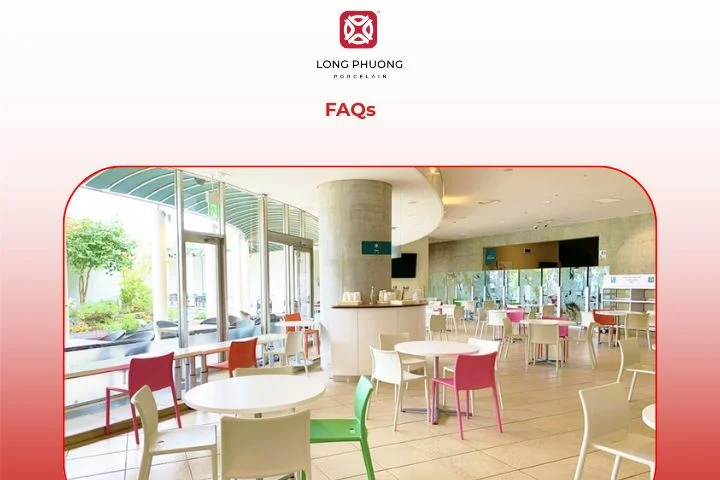
6.1. Why is it called a cafeteria?
The name comes from the Spanish word cafetería, meaning “coffee shop,” but over time, it evolved into a term for self-service dining halls. This historical context helps explain what is cafeteria today.
6.2. Are cafeterias popular for food delivery?
Not always. Some adapt to takeaway trends, showing what is cafeteria modernization.
6.3. What items are typically on a cafeteria’s menu?
Common items include rice dishes, soups, sandwiches, salads, desserts, and drinks, depending on the audience and institution.
6.4. What is the difference between a pantry and a cafeteria?
– A pantry is a basic office breakroom for employee convenience, often stocked with free snacks and equipment for personal use (microwave, fridge).
– A cafeteria is a full-scale commercial food operation where meals are prepared, served, and purchased.
This distinction defines what is cafeteria in a corporate setting.
6.5. What is the difference between a café and a cafeteria?
– A café (or coffee shop) focuses on specialty drinks, a cozy atmosphere, and light snacks, with an emphasis on social interaction.
– A cafeteria is built for speed, volume, and providing full, functional meals through a self-service line – both show what is cafeteria contrast in service.
7. Where to buy reliable porcelain tableware for your cafeteria
When you fully understand what is cafeteria, you know durability and presentation are key.
Running a high-volume cafeteria requires more than just good food—it requires equipment that can withstand the daily grind: constant scraping, industrial dishwashers, and the occasional drop.
This is where the right porcelain makes a massive difference. If your question is what is cafeteria needs most, the answer is robust tableware.
Long Phuong Porcelain specializes in high-quality, commercial-grade porcelain tableware perfect for any cafeteria operation.

Why choose Long Phuong Porcelain for your Cafeteria?
- Superior Durability: Our porcelain is fired at high temperatures, making it incredibly chip-resistant, scratch-resistant, and perfect for the rough handling of a tray line and commercial washing machines.
- Safety and Hygiene: Non-porous surfaces prevent bacteria absorption, ensuring the highest level of food safety and making cleaning simple and quick.
- Sleek, Professional Look: Elevate the dining experience from standard institutional fare to a clean, professional look that appeals to corporate employees or university students. We offer everything from sturdy plates and bowls to practical mugs and serving platters
👉 Explore Long Phuong Porcelain’s full collection today to elevate your cafeteria dining experience with lasting elegance and quality.
Related Articles
CEO of Long Phuong Group Joint Stock Company, with more than 20 years of exploration and research to obtain the best formulas and professional experience, Long Phuong Porcelain has produced more than 400 designs of all kinds of household porcelain, Significant contributions to Vietnam's ceramic industry.
 Vietnam
Vietnam
